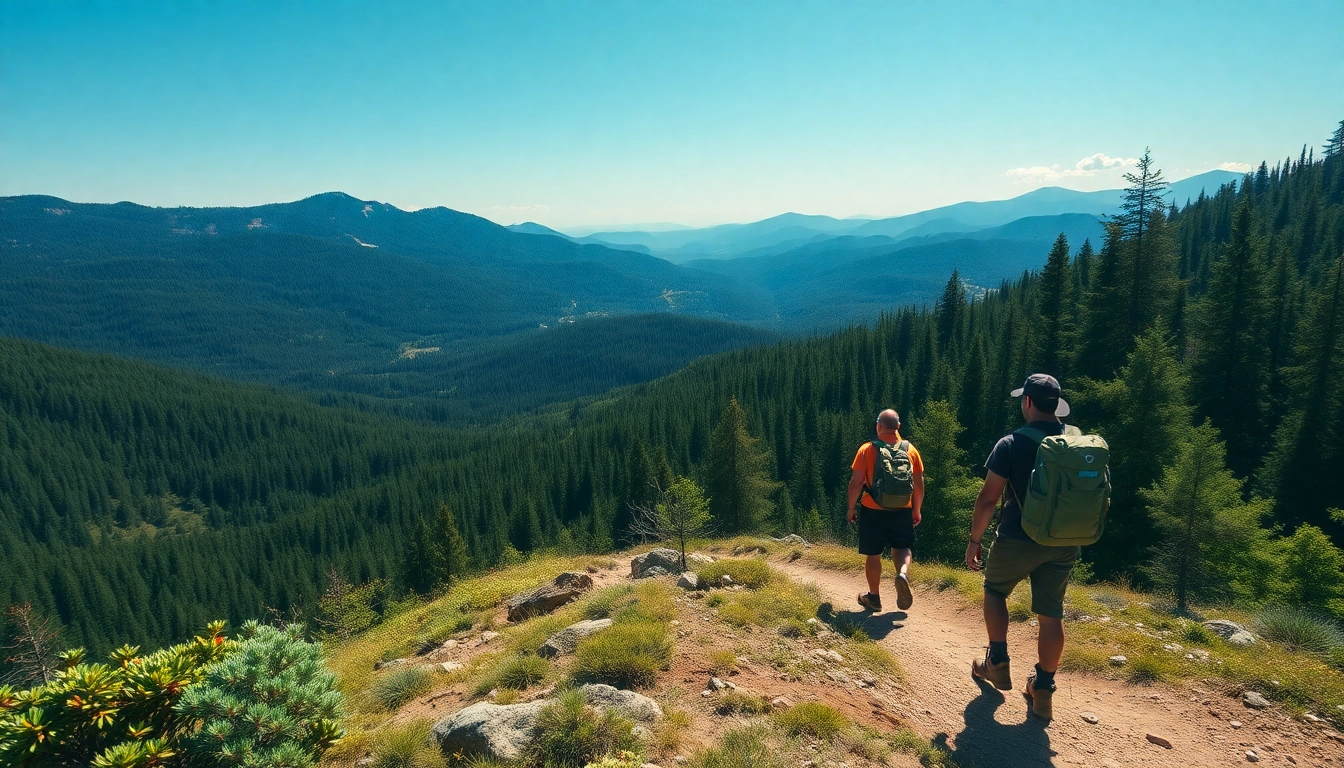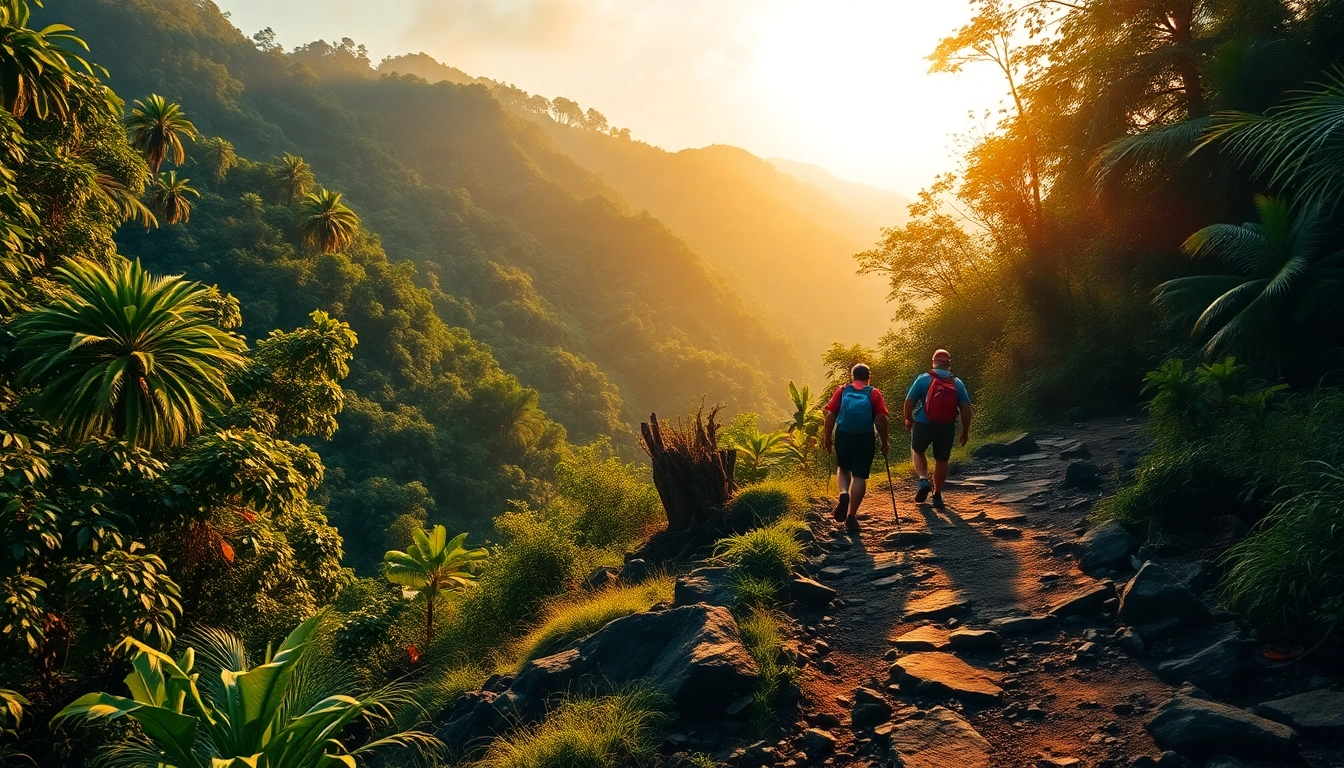Understanding the Guided Trek: Definition and Benefits
Embarking on a trek through stunning natural landscapes is an adventure cherished by explorers worldwide. Among the most enriching ways to experience these journeys is through a guided trek. Unlike independent hikes, guided treks offer a structured, insightful, and safer approach to exploring challenging terrains, allowing trekkers to immerse themselves fully in the environment while benefiting from expert guidance. In this section, we delve into what makes a guided trek a compelling choice for adventure enthusiasts and why they are increasingly preferred over self-guided expeditions.
What Makes a Guided Trek Unique?
A guided trek is characterized by the presence of a knowledgeable guide who leads a group through a predetermined route, often in remote or rugged terrain. This guide is usually an outdoor enthusiast with extensive experience, local knowledge, and a deep understanding of the natural and cultural landscape. Guided treks stand out because they combine exploration with education, safety, and logistical support. Participants learn about local flora, fauna, history, and cultural nuances directly from their guides, transforming each step into an educational journey.
Furthermore, guided treks often include tailored experiences such as storytelling, local interactions, and cultural exchanges, which deepen the connection to the region. They also offer logistical advantages like organized transportation, permits, and accommodations, removing typical planning hurdles for trekkers.
Advantages of Joining Guided Trekking Tours
- Expert Navigation and Safety: Guides are skilled in route finding and handling emergencies, significantly reducing risks associated with wildlife encounters, adverse weather, or getting lost.
- Enhanced Learning Experience: Access to local knowledge enriches the trek, providing insights into ecology, history, and cultural practices that travelers might miss alone.
- Community and camaraderie: Traveling with a group fosters social interaction and shared experiences, making the journey more enjoyable and memorable.
- Environmental Responsibility: Guides emphasize Leave No Trace principles, promoting responsible tourism that minimizes ecological impact.
- Convenience and Comfort: All logistical arrangements—permits, meals, accommodations—are managed by the tour operator, allowing trekkers to focus solely on the adventure.
Safety and Support: Why Guided Trek Is Essential
Safety remains the foremost concern in any outdoor expedition. Guides are trained to handle medical emergencies, navigate difficult terrains, and adapt to changing weather conditions. Their local knowledge allows for the identification of potential hazards, such as unstable paths or dangerous wildlife, ensuring trekkers avoid unnecessary risks. Moreover, in remote areas where communication infrastructures may be limited, guides often carry satellite phones or emergency communication devices, facilitating quick responses in critical situations.
Beyond safety, the emotional and physical support provided by guides cannot be overstated. They motivate and assist trekkers during challenging sections, helping prevent fatigue and injury. Their expertise ensures that the experience remains enjoyable, educational, and safe, regardless of weather or terrain difficulties.
Choosing the Right Guided Trek for Your Adventure
Matching Your Fitness and Experience Level
Selecting an appropriate guided trek depends largely on your physical fitness, previous trekking experience, and personal goals. Beginners may opt for shorter, easier routes with gentle elevations, while seasoned adventurers might seek multi-day expeditions in rugged terrains. It’s essential to honestly assess your endurance, agility, and acclimatization needs. For instance, high-altitude treks require gradual acclimatization strategies and specific preparation, which guides can provide guidance on.
You should review detailed itineraries to ensure the terrain, daily distances, and altitude profiles align with your capabilities. Many tour operators offer consultative services to match participants with suitable trekking programs, ensuring a safe and fulfilling experience.
Factors to Consider: Duration, Route, and Group Size
Beyond your fitness level, other vital considerations include the trip’s duration, route complexity, and group size. Duration influences your commitment — whether a weekend escape or a multi-week immersion. Longer treks often require more physical preparation and mental resilience, but offer deeper immersion into the environment.
The route itself determines the scenery, difficulty, and cultural exposure. Popular routes may include scenic mountain passes, lush forests, or remote wilderness, each offering unique experiences.
Group size impacts the social aspect and logistics. Smaller groups tend to be more intimate, flexible, and personalized, whereas larger groups might offer more budget-friendly options. Discuss your preferences with the tour operator to find a group dynamic that suits your adventure style.
Top Destinations for Guided Treks in Indonesia and Beyond
Indonesia, with its diverse landscapes, offers some of the world’s most remarkable guided treks. Bali’s volcano treks, Lombok’s rugged mountains, and Sumatra’s rainforest expeditions attract avid adventurers. Beyond Indonesia, global destinations like Nepal’s Himalayan trails, New Zealand’s Milford Track, or Europe’s Alps offer iconic guided trekking experiences. Selecting a destination depends on your interest—whether cultural immersion, mountain climbing, or wildlife exploration.
Planning and Preparing for Your Guided Trek
Gear and Supplies for a Successful Trek
Proper planning begins with assembling the right gear. Essential items include waterproof hiking boots, moisture-wicking clothing, a durable backpack, sleeping gear (if camping), and navigation tools. Packing light but comprehensive ensures mobility and comfort. A good rule of thumb is to consult your guide for specific equipment requirements based on the trip’s environment.
Additional supplies might include sun protection (sunscreen, hat), hygiene items, first aid kit, and sufficient water filtration systems. Don’t overlook essentials like high-energy snacks and a camera to capture the journey.
Authentic Cultural Experiences on Guided Tours
Guided treks often include opportunities to engage with local communities and learn about indigenous cultures. Visiting traditional villages, participating in local ceremonies, or sampling regional cuisine enhances the trip’s richness. Guides facilitate responsible interactions to ensure visitors respect local customs and environment, fostering meaningful cultural exchange that benefits both travelers and host communities.
Tips for a Smooth and Enjoyable Trekking Experience
- Prepare physically through regular exercise and endurance training before the trip.
- Maintain a flexible attitude—adapting to weather or terrain changes is part of the adventure.
- Follow your guide’s instructions carefully, especially regarding safety and environmental preservation.
- Stay hydrated and prioritize nutrition to sustain energy levels.
- Foster camaraderie and communicate openly with your group for a more enjoyable experience.
Implementing Best Practices for Guided Trek Success
Working Effectively with Your Guide
Building a respectful and collaborative relationship with your guide enhances safety and enjoyment. Be attentive to their advice, ask questions to deepen understanding, and share your concerns or preferences. Guides can tailor experiences based on your interests and needs, so open communication is vital. Respect their expertise and cultural insights to foster a positive atmosphere.
Environmental Responsibility and Leave No Trace
Responsible tourism is paramount. Follow Leave No Trace principles: pack out all trash, minimize campfire impact, stay on designated trails, and avoid disturbing wildlife. Your actions directly influence the preservation of pristine environments for future generations.
Maximizing Your Learning and Adventure Opportunity
Engage actively with your guide by asking questions about the flora, fauna, geology, and local history. Take notes, participate in cultural activities, and reflect on your experiences to deepen your appreciation. Use downtime to socialize and learn from fellow trekkers, transforming the journey into a comprehensive educational experience.
Measuring Your Trekking Success and Visitor Satisfaction
Tracking Progress and Achievements
Record your daily milestones, including distance covered, elevations gained, and new skills acquired. Many guided tours provide progress logs or digital tracking tools. Celebrating these achievements boosts confidence and provides tangible proof of your adventure.
Testimonials and Feedback for Continuous Improvement
Sharing your experience through reviews helps improve tour offerings and guides’ performance. Constructive feedback on logistics, safety, and cultural integration assists future travelers and tour operators in enhancing the overall experience.
Building a Community of Like-Minded Trekkers
Trekkers often form lasting bonds, whether through post-trip forums, social media groups, or future joint adventures. Maintaining connections enriches the trekking community, allowing exchange of tips, stories, and inspiration for upcoming journeys.

